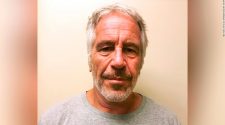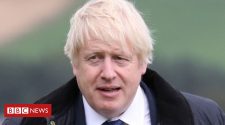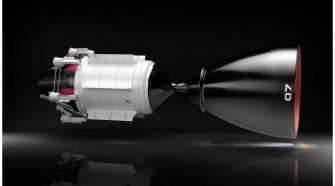The strikes occurred at about 11 a.m. ET on Sunday, a source familiar with the matter told CNN. They stand as the first significant military response in retaliation for attacks by the Shia militia group, known as Kataib Hezbollah, that have injured numerous American military personnel, according to US officials.
Pentagon spokesman Jonathan Hoffman described the strikes against the group as “precision defensive strikes” that “will degrade” the group’s ability to conduct future attacks against coalition forces.
Defense Secretary Mark Esper briefed President Donald Trump Saturday before carrying them out with the President’s approval, according to a US official familiar with the strikes.
The US airstrike in Iraq near the Syrian border killed four soldiers, including a brigade commander, tied to the militia, the Iraqi military said Sunday. Thirty members belonging to the militia were also injured, according to the military.
Kataib Hezbollah is a group under the Tehran-backed Popular Mobilization Units. Jewad Kadum, a PMU official, said in a statement Sunday that the rescue operations are still ongoing as well as the evacuation of the wounded, recovery of the dead bodies and the extinguishing of the fire caused by the airstrikes.
US officials travel to discuss strikes with Trump
Esper, Secretary of State Mike Pompeo and Joint Chiefs Chairman Mark Milley, are expected to travel Sunday to Mar-a-Lago to discuss the strikes with Trump, according to the source familiar with the matter. An administration official also confirmed to CNN the key national security officials’ expected travel.
US officials said the five targets included three Kataib Hezbollah locations in Iraq and two in Syria. Those locations included weapon storage facilities and command and control locations that the group uses “to plan and execute attacks on OIR (Operation Inherent Resolve) coalition forces,” according to the Pentagon.
The strikes all came from the air using F-15 Strike Eagle fighter planes, the US official familiar with the strikes said. Secondary explosions were observed after some of the strikes, indicating the sights may have housed ammunition.
While there were multiple strikes, the sites being hit were relatively small, the official told CNN. Whether the US decides to strike further will depend on the activities of the militia, they said, and whether it conducts additional attacks against US interests.
American officials have blamed the group for attacks like one on Friday on a base near Kirkuk, Iraq, that killed a US civilian contractor and injured four other US service members.
“KH has a strong linkage with Iran’s Quds Force and has repeatedly received lethal aid and other support from Iran that it has used to attack OIR coalition forces,” he said.
The White House had no additional comment when reached by CNN on Sunday.
Iraqi Prime Minister Adil Abdul Mahdi said the Baghdad government rejects “unilateral action” by coalition forces inside his country, according to a statement carried on Iraqi state TV Al Iraqiya.
“We have already confirmed our rejection of any unilateral action by coalition forces or any other forces inside Iraq. We consider it a violation of Iraq’s sovereignty and a dangerous escalation that threatens the security of Iraq and the region,” the Iraqi prime minister said.
Escalating tensions between the US and Iran
The US had been pushed to the brink of retaliation against Iran or its proxies before Sunday’s strikes, specifically after attacks this summer on oil tankers in the Persian Gulf and oil facilities in Saudi Arabia and Iran’s downing of a US drone in June.
US officials, including Pompeo, repeatedly stressed that any threat to the freedom of navigation in the Gulf and the oil trade would be considered unacceptable, but the Trump administration took no action.
Over the past two months, however, US officials have grown increasingly concerned as the threat to US and coalition forces became more immediate. In the last several weeks, a series of rocket attacks have targeted military installations in Iraq where US and coalition personnel are stationed. US officials linked them to Kataib Hezbollah, citing similarities in the attacks.
And behind the militant group, US officials pointed to Iran.
Tensions between the US and Iran have increased over 2019 as Washington tightened the economic squeeze on Tehran through its “maximum pressure” campaign and Iran responded with what it calls for “maximum resistance.”
Tehran’s resistance has taken the form of gradually reduced compliance to the international nuclear deal that the US left in May 2018 and a campaign of regional provocation that began escalating in May.
That month, four oil tankers in the Persian Gulf were damaged by mines, drones launched by Iran-backed Houthi rebels in Yemen hit two segments along a major Saudi east-west oil pipeline and a rocket landed near the US embassy in Iraq.
On the last day of May, a suicide attack in Kabul, Afghanistan, wounded four US servicemen. While the Taliban claimed responsibility for the attack, Washington blamed Iran.
In June, two more tankers were attacked in the Gulf of Oman and Iran downed a US drone, bringing Trump to the very verge of ordering a strike on Iran before he called it off at the last minute. In August, up to 10 Houthi drones targeted a Saudi oil facility and in September, cruise missiles caused significant damage to another Saudi oil facility. The US, Saudi Arabia and European nations pointed the finger at Iran.
This story has been updated with additional developments Sunday.
CNN’s Jeremy Diamond, Nicole Gaouette and Devan Cole in Washington, Aqeel Najim in Baghdad and Hamdi Alkhshali in Atlanta contributed to this report.













Andrew Yang wades into backlash over new ‘SNL’ cast member’s bigoted comments